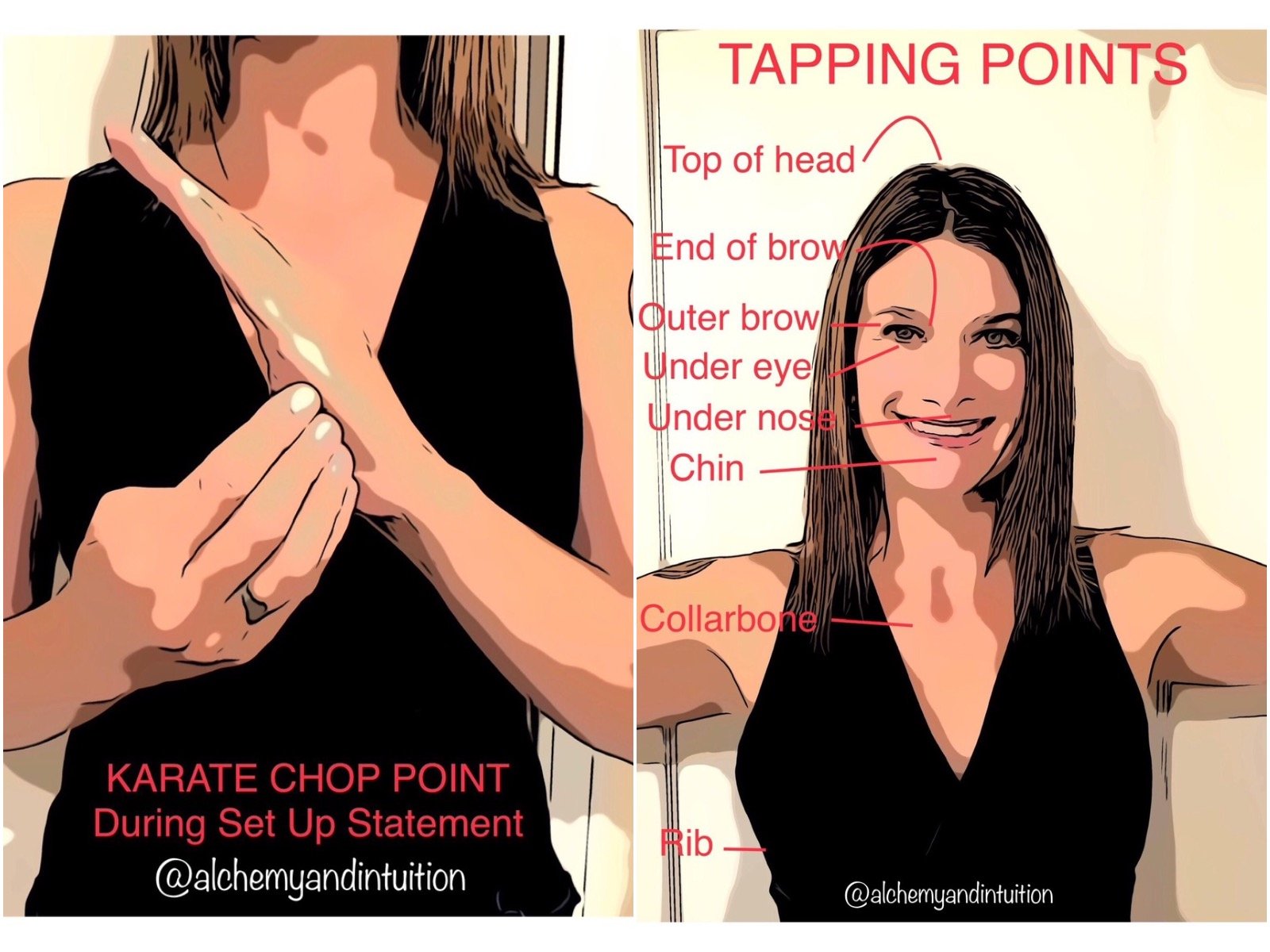The Emotional Freedom Technique (EFT), or tapping, is a simple stress reduction technique that can be used by anyone, anytime. It works by tapping on acupuncture points while recounting negative emotions or situations until the intensity of those feelings goes down. There have been countless studies done on the effectiveness of tapping, which can be found on the EFT Universe website.
Our brain takes note of everything that happens to us. It creates connections and associations between things to simplify and make them familiar to us. Humans like things that are familiar; we like to know what to expect. Unfortunately, this is an imperfect system that can lead to emotional distress and disorders like PTSD.
When we recount things repetitively over time, this develops neural pathways; it’s like we are training our brain into the negative aspects. The more we recount, the more our brains associate new negative events to these old narratives, which in turn strengthens our negative response to them. We know that stress causes our nervous system to engage in a way that is similar to what happens when we are in imminent danger. Your body has a physical response to the emotional stimulus, which can affect physical and emotional health. Over time, this is incredibly hard on our bodies. For example, the brain loses its ability discern between the anxiety of taking a test versus being chased by a hungry tiger.
Tapping is an easy way to start retraining your brain out of old responses so we can live full and happy lives. It keeps our minds anchored in the present moment, so we can effectively digest the emotions and events that have happened in the past. We are always looking to find a neutral place when we use this technique. We may have had a bad or painful experience in the past, but we can learn from the situation and move on to find peace.
Tapping can be done by yourself, with a friend or someone trained to facilitate a tapping session. For more intense and longer-lasting issues, it is helpful to work with someone who has had training. It is also best to consult with your mental health professional to see if they think tapping is a good fit for you. This technique is not meant to diagnose or treat physical or mental health conditions. Do not discontinue any medications or stop seeing your medical professionals.
There are many different ways to use this technique for different situations, and it is fully customizable and accessible to people of all ages and abilities. If someone is unable or unwilling to tap themselves, you can tap for them or use a stand-in (like a stuffed animal) to tap.
Today I will go over the most simple form of tapping. There are other techniques that utilize more points and other practices, but for the most part, the simple form is all you need. If you have never tapped before, I suggest tapping through the points several times to get used to the location and rhythm before you begin. The points are as follows:
- Side of the hand (pinky side, also known as the karate chop point)
- Top of the head
- Inside of eyebrow
- Outside of eyebrow
- Below the eye
- Below the nose
- Below the lips
- Collar bone (in the indentation below where your collarbone meets your sternum)
- Under the armpit (about five inches down on your ribs, where the band of a bra would be)
- Front of the ribs
- Continue to cycle through points 2-10

Now that you know where to tap, here are the steps to follow to start easing your discomfort.
1. Identify the issue
The more specific the better. Try to use real examples of events with a lot of detail rather than generalizations.
- Example: test anxiety ("The first time I had test anxiety I was in the fourth grade. It was a big math test, and I was really bad at fractions.")
2. Rate the intensity
On a scale of 0-10, how strongly do you feel this?
3. Create a set-up statement
We create a two-part statement that acknowledges the issue and unconditionally affirms ourselves.
"Even though ___________________, I still deeply and completely love and accept myself."
We repeat this three times while tapping on the karate chop point.
- Example: "Even though I have test-taking anxiety, I still deeply and completely love and accept myself."
4. Start tapping
Start tapping through the rest of the points while saying simple reminder statements. Remember to stay with the feelings. Tap on whatever comes up: physical pain, a different emotion, etc. Let it come up – just remember to keep tapping! Do a few rounds. Here's an example:
- Top of the head: "I hate taking tests."
- Inside of eyebrow: "They give me so much anxiety."
- Outside eyebrow: "My heart starts racing."
- Below eye: "I have test anxiety."
- Below nose: "It makes it hard to concentrate."
- Below lip: "It started when I was in fourth grade."
- Collar bone: "I will always have this test anxiety."
- Below arm pit: "This text anxiety."
- Front of ribs: "Overwhelming anxiety."
And so on.
This might bring up old memories, but if that happens, go with it! Recount those memories in as much detail as possible. The more specific, the better. Just be sure to keep tapping through the entire process. If you start feeling any physical sensations, like chills or lump in your throat, describe those sensations – what does it feel like, where is it located and any other characteristics you can use to describe it.
5. Pause and check in
Take a deep breath and re-rate your intensity.
6. Repeat as necessary
If it’s a two or higher, repeat steps four and five until it’s less than a two.
7. End on a positive note
This one is optional. It isn’t always necessary for a successful tapping session, but it does feel good. Here's an example:
- Set-up statement three times: "Even though I’ve struggled with test anxiety, I choose to not let it control my life."
- Go through the points: "Test anxiety will not control me. I can become a good test taker. I won’t always have this test anxiety. I’ll never feel this anxiety again, etc."
While you are tapping, you may become aware that things are shifting before you even pause and check in. Yawning and coughing can be signs that things are shifting. Sometimes repeating a statement you said in a previous round will no longer feel true. You may feel lighter and not as weighed down.
If you don’t have the time, or are in public or another situation where you can’t go into this much detail, just start tapping while thinking about what is overwhelming you. You can tap through all the points or just pick one. I like to use the collar bone point when I’m feeling overwhelmed or anxious. If you want to be a little more covert, you can just tap on your finger tips.
I hope you give tapping a try and see how good it feels to no longer be weighed down by the past. If you enjoyed learning this technique and would like to go further or deeper with some help, I am available for virtual sessions Monday through Friday. In-person sessions and combination tapping and acupuncture sessions will resume once the "Safer at Home" order has been lifted.
Stay tuned for more Facebook Live tapping sessions with me on the OnMilwaukee Facebook page.







